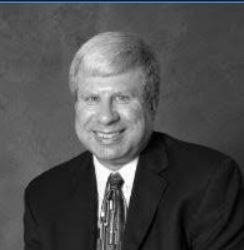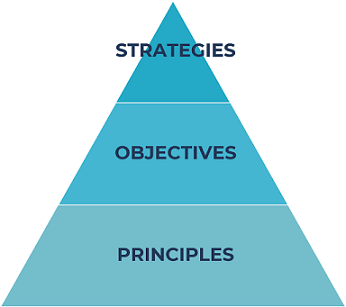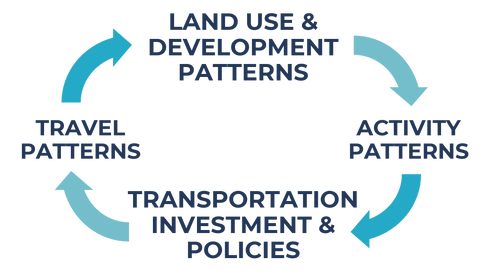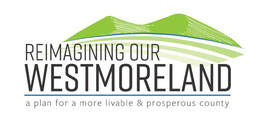|
The Intergovernmental Cooperation Working Group has been having useful calls and is prepping for the final call, February 19 at 3 PM. These Zoom meetings are available to the officials from all the AK Planning District municipalities. Contact Susan Hockenberry for more info.
Here are the materials from today's meeting. We are reviewing and discussing on 02/19/2020. See you then! 02/12/20 Slides Sample Formation Resolution WEDIG ICA WEDIG ByLaws In order to facilitate meaningful conversations among the participants of the Alle-Kiski Planning District on the topic of intergovernmental cooperation, a series of 4 working group video/tele conferences are being held.
Informational Resources supporting the discussions: Sample Intergovernmental Cooperation Organizations
DCED Intergovernmental Cooperation Handbook DCED COG Directors Handbook PACOG COG Directory Over the course of the last several months, your input has aided in the creation of the following Future Land Use Map for the Alle-Kiski region. Together, your respective municipalities have identified areas for Preservation, Enhancement, and Transformation.  At the last Alle-Kiski Planning District meeting on December 5th, we conducted a survey of land use priorities for each municipality that was able to attend. Together, we looked at strategies from Reimagining Our Westmoreland (see below) as they pertain to key issues that have been identified throughout the planning process such as parks and recreation, blight, etc. Alle-Kiski Planning District Land Use Strategies
We look forward seeing you in the New Year at the next Alle-Kiski Planning District meeting on January 22, 2020 @ 6:30 PM in Upper Burrell Township, 3735 Seventh Street New Kensington, PA 15068. At the November 7, 2019 meeting, we reviewed the basic assumptions underpinning the land use planning efforts in the District. This post reduces to writing those principles that represent a fundamental understanding or proposition that serves as the foundation for a system of belief or behavior or for a chain of reasoning. They help us conceptualize land use in a set of value statements. The set of principles listed below represent commonly held values that guide the process of land use planning in the District. They are presented below in a chain of reasoning, but not necessarily hierarchically.
Principle 1: Growth Is Inevitable Despite our region’s soft growth demand, growth and development will occur. Sound land use planning, guided by the concepts of Preservation, Enhancement, and Transformation, will inform how and where development occurs. Principle 2: Growth Has Impacts Growth and development have both positive and negative impacts on economies, the environment, and society. Focused efforts of Preservation, Enhancement, and Transformation will support the positive and mitigate the negative effects of growth. Principle 3: Preservation, Enhancement, and Transformation Depend on Public Decisions The public, both in its broadest sense (countywide) and narrowest sense (the individual), has an opportunity to shape land use in ways that maximize the financial, environmental and social impact of local decisions. Principle 4: Public Involvement Is Essential Since Preservation, Enhancement, and Transformation depend on public decisions, the public has a right to be a part of the decision-making process. Principle 5: Impacts of Land Use Decisions Extend Beyond Municipal Boundaries Decisions made regarding Preservation, Enhancement, and Transformation in one community can have financial, environmental, and social impacts on neighboring communities. Principle 6: Preservation, Enhancement, and Transformation Priorities Vary Among Individuals and Within Communities Some communities may value a rural setting, others may favor an intensely urban environment, while more may prefer a suburban development pattern. The same is true among individuals. Furthermore, these priorities can vary within communities. Balance among these priorities is essential to highly valued communities. Principle 7: Planning Is Essential at the Smallest and Largest Scales A cohesive community that balances the financial, environmental, and social impacts of growth and development relies on planning at the site, street, block, neighborhood, village, town, city, county, and regional level. The approach of Preservation, Enhancement, and Transformation provides a framework for land use planning. Refer back to these principles to understand guiding assumptions the Alle-Kiski team reflected on and verified as a set of assumptions we can rely on going forward. Reach out to Westmoreland County Planning to learn more.  Across the Alle-Kiski Planning District, we have unique attributes and opportunities to preserve, enhance and transform special places. At the September and October Planning District meetings, we heard about these places and mapped them for all 11 municipalities. Then we talked about their shared characteristics. From that process, we’ve developed a set of land use planning Principles, Objectives and Strategies. The purpose of the land use planning exercise, just like the comprehensive plan, is to take steps that will attract, develop and retain a diverse and stable workforce that will sustain a healthy economy. The Principles, Objectives and Strategies help us do that in three ways. First, Principles help us frame our decision-making process. They help us recognize the values of our communities and how they guide us as public officials. Second, Objectives provide the context for understanding the local circumstances of the Alle-Kiski region. The objectives of the Alle-Kiski region are likely to be different than those of Central Westmoreland or the Ligonier Valley. In this way, we are looking to build off of local strengths, like the riverfront, that are unique to the region. Lastly, Strategies offer us the “how” of the Objectives. For instance, the county comprehensive plan discussed the need for more housing options and better transportation choices. Addressing these two interrelated needs can be addressed through amendments to zoning ordinances and transportation projects, among many other strategies. Our next step is to refine these strategies and make them useful for the communities of the Alle-Kiski Planning District. At the next meeting, we’ll be looking to confirm the substance of the Principles and Objectives with leaders of the region. After that, we’ll identify the specific strategies that can be useful to achieve the goal of the comprehensive plan. "At the September 23, 2019 Reimagining Our Westmoreland meeting we spent sometime exploring the gray areas of regional cooperation.
While public officials at every level appreciate the benefits of intergovernmental cooperation, how it plays for them and their community depends on the various features of the proposal. Unfortunately, when it comes to entering into intergovernmental agreements, a yes or no vote is the only option. What if we could examine ideas and express our response on a range from "wholly endorsing" to "I would work against"? It would generate a lot more conversation, and that is what we set out to do. At the September 23 meeting, we explored 4 hypothetical scenarios (made up by the facilitator) and asked participants to rate their approval on a range of responses. This was to generate some conversation. The tabulation is in. We will continue to hone in on opportunities at the November 7, meeting.  As participants in the Reimagining Our Westmoreland Alle-Kiski Planning District have experienced so far, Alan R. Kugler, Principal of PA Futures and noted expert on intergovernmental initiatives in Pennsylvania, has been participating as part of the facilitation team. We asked Alan to give some context and advice on intergovernmental initiatives related to Alle-Kiski . Read on to learn more in this informative article: All across Pennsylvania the boundaries of our local municipal governments often do not encompass complete communities. More often than not our communities span several municipalities. The boundaries of the local municipal governments divide interdependent, geographic, social, and economic communities. As a result, especially when citizens and their elected officials fail to recognize the interconnections, there often exists throughout much of the Commonwealth profound lack of intergovernmental communication, duplication of services, needless inefficiencies, lack of cross-boundary visioning and planning, and cumbersome coordination and decision-making. Unfortunately, there is a definite connection between this type of governmental interdependence and economic performance. Across Pennsylvania, our cities and older urban areas are under siege from interconnected patterns of aging and declining populations, falling median incomes after adjusting for inflation, unnecessarily costly services, and eroding tax bases, while the areas immediately surrounding them may appear relatively prosperous. This prosperity however is often only in the eyes of the beholder. Most of even the wealthiest suburbs in Pennsylvania are not keeping pace with the economic performance of the rest of the nation. Stymied economic performance in our cities and suburbs can be traced directly to the inability to “act as a team” and “get along within the family.” For example, for decades “intergovernmental wars” in places such as Erie revolved around the provision and expansion of City services to neighboring localities. For example, beginning with the post WWII population boom, many people and businesses wanted to come to the Erie region but were hindered because the host city refused to make its water services available much beyond its boundaries. The result was years of litigation, and the limitation of economic performance. At the same time, the inability to coordinate and cooperate in our communities across Pennsylvania has unnecessarily driven urban land consumption, thereby, in many cases, undermining the very values many cherish in the more traditionally rural and open areas of our townships. The good news is that this adverse trend can be reversed. Active cooperation and coordinated service provision among local governments through vehicles such as Councils of Governments (COGs) and other intergovernmental organizations can go a long way to support economic vibrancy and fiscally healthy regions. Additionally, through locally approved citizen-based processes, combining of governments by structural consolidation or merger is another alternative that can lead to substantial and meaningful differences in the economic competitiveness and quality of life of our communities. The PA Intergovernmental Cooperation Law (53 Pa. C.S.A. § 2301) is the enabling statute for intergovernmental cooperation among counties and municipalities in Pennsylvania. This law permits all local governments to cooperate with one another in any action or service that the governments have the power to do alone. The term “local government” is defined as “a county, city of the second class, second class A and third class, borough, incorporated town, township, school district or any other similar general purpose unit of government….” This law gives far-reaching authority, stating “two of more local governments may jointly cooperate in the exercise of or in the performance of their respective governmental functions, powers or responsibilities.” It further states that a “local government may enter into intergovernmental cooperation with or delegate any functions, powers, or responsibilities to another governmental unit or local government upon the passage of an ordinance by its governing body.” There are two general methods of intergovernmental cooperation. These include: (1) formal agreements and (2) councils of governments (COGs). In addition, there are many “handshake agreements.” Handshake agreements include unwritten arrangements between local governments and any written agreements not formally adopted.
Action steps for the Westmorland County Alle-Kiski Planning District
Meeting 3 occured on August 26, 2019 in the first new location, New Kensington, and thanks to New Ken Mayor Tom Guzzo and City Clerk Dennis Scarpiniti for welcoming their Alle-Kiski Valley colleagues.
The August 26 event was focused on the survey results and areas to preserve, enhance, transform in the Alle-Kiski valley. The group continues to reimagine the Alle-Kiski local government community! The slide presentation is available here. Check back for more news and information about the subjects covered. You may RSVP now to attend September 23, 2019 at 6:30 at West Leechburg Fire Fireman’s Recreation Hall, 1116 Gosser St. West Leechburg, 15656. See you there! With college students returning to campuses across the country this month, many are moving into a new dorm or have made the switch to an apartment or shared house off-campus. Many will find their choice matched their needs perfectly. Let’s consider two students at the same college who made two different choices. We’ll call them Samantha and Davis.
Samantha wants to be close to campus owing to her job at the computer lab. She also wants to be close to coffee shops, a laundromat, friends and of course, the neighborhood business district. Choices to get around, either by foot, bike, car, bus or ride-share are plentiful in this close-in neighborhood. With more choices of transportation, more choices for housing, jobs, friends and activity become possible. In this neighborhood, access to choices is much greater. It’s more difficult for her to travel very far outside of town, unless she rents a car or gets a ride from a friend. Samantha chose the ability to access lots of places close-by. Samantha's Place may look like this. Photo by Westmoreland County Planning Many others will find they made a choice of mobility over access. Davis needs to make the two hour drive home on weekends to help care for his aging grandmother, so he’s able to find an apartment outside of town, by the shopping center. Since he’s removed from campus by a few miles, the bus doesn’t come when he needs to make it to class. Biking could be an option, but it isn’t very safe, especially when drivers can’t see him at night. Rideshare is available, but he can never be sure he won’t be stranded after 11 PM. He quickly finds that he needs to drive everywhere and take care of parking wherever he goes, except near the shopping center and his apartment. Davis’s need to travel farther on the weekends influenced his housing decision and traded access for mobility. Davis's Place might look like this. Photo by washcycle.com In these two examples, we see how a community’s development pattern influences our future choices of transportation and vice versa. And in many ways the choices we make now, limit options down the road. This is the essential relationship between land use and transportation. The question then, for the Alle-Kiski communities, is how do we balance access and mobility? The choices we make now, about growth and redevelopment, zoning, subdivision, land development, transportation investments and public sewer infrastructure tip that balance one way or the other. Now, we have an opportunity to describe a shared vision for areas of Preservation, Enhancement and Transformation. Creating that vision informs our decision making about the growth and redevelopment options before us. Creating that vision ensures we Preserve, Enhance and Transform the places that matter in our lives and continue to balance access and mobility in ways that are useful for our communities.
Thanks to the continued participation and dedication of municipal officials in the 11 municipalities of the Alle-Kiski area, the Alle-Kiski team is starting to take shape. With just two meetings completed, there has been solid representation from every municipality within the District. Through honest, facilitated discussion thus far, we are beginning to be able to answer the question, “Who is Team Alle-Kiski?” From this shared process, group voices are beginning to come together and the characteristics of team Alle-Kiski are starting to be teased out.
Although each municipality has its own unique and separate characteristics, many also overlap and inform the Alle-Kiski as a whole. At the July 29th meeting, we had asked municipal officials to participate in a team WIKI (“What I Know Is”) exercise where participants paired up to ask each other a series of questions. From this exercise, it is clear that Alle-Kiski team members share several of the same values, motivations, expectations of others, and limits. The Alle-Kiski team is one that:
At the end of the meeting, compiling team statements helped to summarize what was learned about the team in the team WIKI exercise. These statements fall into four buckets: commitment to citizens, working together, ethical responsibility, and hardworking nature. Through the process of identifying team values, motivations, expectations of others, and limits, we have started to define how the Alle-Kiski team can successfully function together. As we move forward through this shared process, we will continue to tease out more values and characteristics, to fill these buckets and inform our reimagining of the Alle-Kiski region. |







